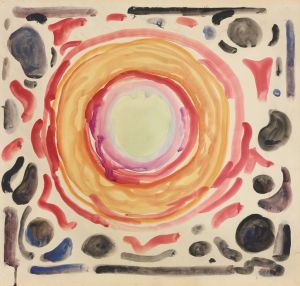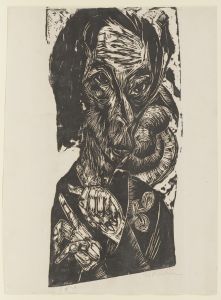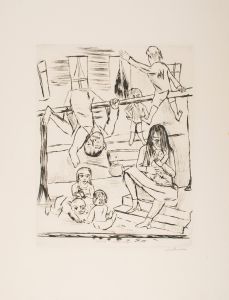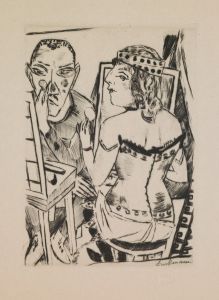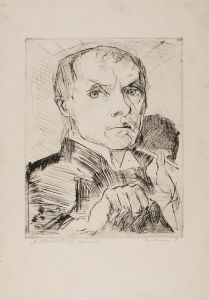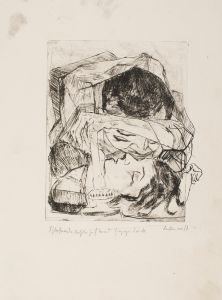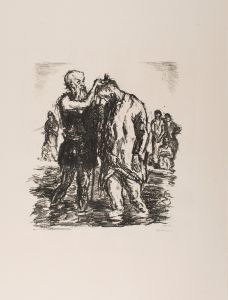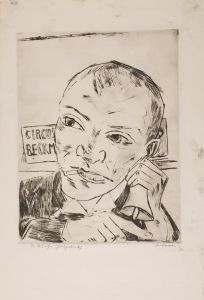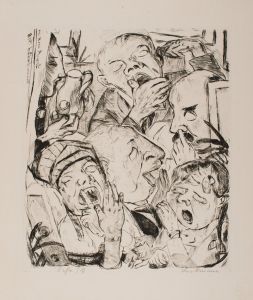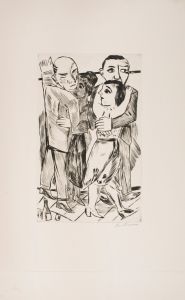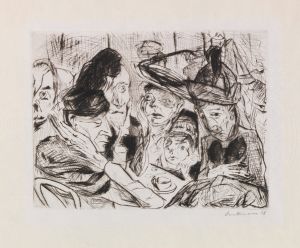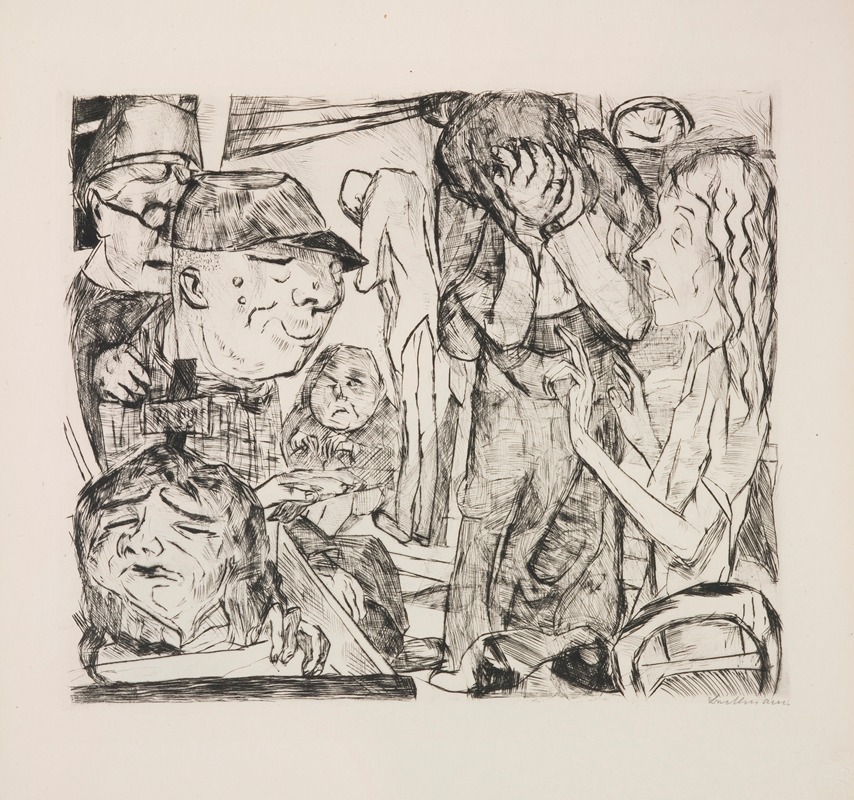
Madhouse, plate 3 from the portfolio ‘Faces’
A hand-painted replica of Max Beckmann’s masterpiece Madhouse, plate 3 from the portfolio ‘Faces’, meticulously crafted by professional artists to capture the true essence of the original. Each piece is created with museum-quality canvas and rare mineral pigments, carefully painted by experienced artists with delicate brushstrokes and rich, layered colors to perfectly recreate the texture of the original artwork. Unlike machine-printed reproductions, this hand-painted version brings the painting to life, infused with the artist’s emotions and skill in every stroke. Whether for personal collection or home decoration, it instantly elevates the artistic atmosphere of any space.
Max Beckmann's Madhouse, plate 3 from the portfolio ‘Faces’ is a black-and-white lithograph created in 1921. It is part of a portfolio titled Gesichter (translated as Faces), which consists of ten lithographs. This portfolio reflects Beckmann's exploration of human emotion, societal conditions, and psychological states in the aftermath of World War I. The works in the series are notable for their raw, expressive style and their focus on the complexities of human experience.
Madhouse depicts a chaotic and unsettling scene, characteristic of Beckmann's interest in the darker aspects of human existence. The composition features distorted figures in a confined space, evoking a sense of claustrophobia and emotional turmoil. The figures appear fragmented and exaggerated, a hallmark of Beckmann's expressionist approach. This style was influenced by the broader Expressionist movement in Germany during the early 20th century, which sought to convey emotional intensity and subjective experience through bold, often distorted imagery.
The portfolio Faces was created during a period of significant upheaval in Germany, following the end of World War I and during the early years of the Weimar Republic. Beckmann, like many artists of his time, was deeply affected by the war and its aftermath. His work from this period often reflects themes of alienation, trauma, and the fragility of human existence. Madhouse can be seen as a commentary on the psychological and social disarray of the time, though Beckmann's works are often open to interpretation and resist definitive readings.
Max Beckmann (1884–1950) was a German painter, printmaker, and writer, widely regarded as one of the most important artists of the 20th century. His work spans several artistic movements, including Expressionism and New Objectivity, though he resisted being categorized within any specific movement. Beckmann's art often grapples with existential themes and the complexities of modern life, making him a pivotal figure in the history of modern art.
The Faces portfolio, including Madhouse, was published by Verlag R. Piper & Co. in Munich in 1922. The lithographs were printed by Franz Hanfstaengl, a prominent printing house in Munich. Today, works from this portfolio are held in various museum collections around the world, including the Museum of Modern Art (MoMA) in New York, which houses a copy of Madhouse. These prints continue to be studied and appreciated for their artistic and historical significance.





